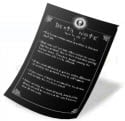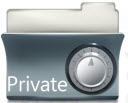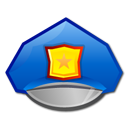 It is one of the most important conversations we can have. When student privacy and safety is at stake, we all have an obligation to do our part.
It is one of the most important conversations we can have. When student privacy and safety is at stake, we all have an obligation to do our part.
Keeping in mind that laws and policies vary depending on where you are and what age you work with, there are some common sense tips we should all follow.
The discussion below was inspired by comments left by educators on this Edublogger post over the past few weeks.
This post was co-written by Ronnie Burt and Sue Waters.
Is it fact, fiction, hype or fear?
Let us start by discussing the concerns of students working online and why we need to care before looking at some common sense tips.
As middle school teacher Jabiz Rasidana says:
“What, exactly is it, that everyone is so afraid of?”
Too often media creates hysteria about Internet predators leading school districts to respond to parent and teacher concerns by blocking any kind of social networking while failing to highlight the positive aspects achieved when students collaborate online as part of a global community.
Gail Desler highlights:
While we recognize that online predators pose a threat, about 1% of child abuse and sexual abuse cases, and we certainly do not dismiss the need to teach our students about safety issues, such as “grooming,” we also want all students to learn to use the Internet effectively and ethically.
Our middle school counselors, for instance, report that over 60% of their case load involves handling and defusing cyberbullying and “sexting” issues – mainly from smart phones. Pretty much 100% of the time, the parents are clueless as to how their children are using the Internet.
Digital citizenship should be built into media literacy —media literacy as a must-have skill for the 21st century.
Internet safety is best taught at school and not at home (sorry, parents).
And like Kathleen McGready says:
The biggest thing is … you can’t just do one off lessons on cyber safety. Cyber safety is not a separate subject.
Through being heavily involved in blogging, my grade two class has opportunities almost every day to discuss cyber safety issues and appropriate online behaviours in an authentic setting.
When we’re writing blog posts and comments together, a wide range of issues come up incidentally. The discussions are so rich and purposeful and my students now have an excellent understanding of the do’s and don’ts of internet safety.
Most of us agreed that:
- Teaching students what can and what shouldn’t be shared online can’t be boiled down to a few lessons.
- It is best if the topic is brought up often and in context when working with any web technology.
What do we need to consider?
The reality is that we’ve got to face the questions and concerns raised when students are online head on.

Our world is increasingly connected, and our students need to know how to interact online safely and with some level of privacy. The trouble is that educators, administrators, online web tools, politicians, and parents just aren’t sure what that looks like yet. And for some reason, a consensus decision isn’t likely anytime soon. Either way, we must educate students about the expectations we have of them when they are online and about the digital footprint they leave behind.
We need to educate our students on how to work in a safe online environment.
As Kathleen McGeady commented,
“I don’t think it matters that much what your actual policies are on photos/avatars/no images etc as long as you’re having conversations and doing something!”
Here’s some things to consider and our advice when working online with your students.
Tip #1: Set clear guidelines
 It’s crucial to have clear guidelines so that all parents and students are aware of what is and isn’t appropriate.
It’s crucial to have clear guidelines so that all parents and students are aware of what is and isn’t appropriate.
The best approach is to get students involved with creating the guidelines.
For example. Pernille Ripp has an excellent activity using the analogy The Internet is like a Mall. She tells them that going on the internet is like going to the mall without your parents’ supervision and asks them to share how do they stay safe at the mall? This takes the students from a topic they already understand and know to applying those same principles online.
Check out these examples:
- Pernille Ripp’ s Internet Safety Plan and Blogging Introduction
- Kathleen McGeady’s Introduction to Bloggigng Handout, Guide to Getting the Most out of 2KM’s Class blog and Our Blog Guidelines
- Edublogs Guide to Using Blogs With Students
Here’s how to set up your blogging rules and guidelines.
Tip #2: Use of student names
 This is usually one of the first items to think about before using any online services with students.
This is usually one of the first items to think about before using any online services with students.
Can they use their full name, first name only, last initial, or maybe a made-up username? In general, obtaining parent permission for minors is important when using anything other than a made-up or “code” name.
Most educators use the student’s first name only combined with a combination of letters and/or numbers that might represent their year level, room number, school or class blog such as amberh4 or adrianhan10 for student usernames and blog URLs.
Tip #3: Use of photos
 Use of student photos, and especially linking names with specific photos, are also questions that come up when blogging, sharing videos, or using other web services online. Even though 99.9% of visitors to your class blog will be well meaning parents, students, community members, or interested visitors from around the world, the unfortunate reality is that those with bad intentions can also visit public sites. There are also cases where the personal background of a student might mean they need more privacy and anonymity than others.
Use of student photos, and especially linking names with specific photos, are also questions that come up when blogging, sharing videos, or using other web services online. Even though 99.9% of visitors to your class blog will be well meaning parents, students, community members, or interested visitors from around the world, the unfortunate reality is that those with bad intentions can also visit public sites. There are also cases where the personal background of a student might mean they need more privacy and anonymity than others.
Decisions on whether to use student photographs or not is often more about protecting educators from having problems with parents or administrators who have concerns about cyber-predators.
A safe compromise is to only use photo taken from behind students.
On the other hand, one of the most engaging and powerful aspects of blogging comes from the sense of pride and ownership that only happens when you put yourself out there for the world to see. For this reason, many teachers do use student images.
As middle school teacher Jabiz Rasidana points out on Intrepid Teacher,
“the most rewarding experiences I have had online, the most authentic and personal relationships have been because I shared more than I should have.”
And the same is true for students. We put our thoughts and ideas out there, and everyone learns from it – especially the blogger.
Kathleen McGready says:
Unlike many classes, I identify students by first name and photo. Of course I gain parent permission for this and 100% of my parents have been supportive. Last year, I did not publish photos of students and I think there were more cons than pros. The parents and the classes we work with around the world are able to connect more with our blog and student work by seeing who the authors are.
Taking it a step further, any student comments or posts may need to be kept private behind a password. This is understandable – imagine if you were the one student in a class that for one reason or another shouldn’t have your photo online especially when it comes to your avatar. All of your classmates have a photo avatar while you are left with a funny image or drawing. You probably wouldn’t be too happy about this.
An alternative solution is to get your students to create their own avatar using these online reources without using a photo!
The key is to have the conversations with your administrators and parents about the use of photos online — so you can address the needs of your community.
Tip #4: Public vs Private

Many times, cautious administrators or teachers will opt to keep all blogs private.
However, being locked behind a password greatly limits the global learning aspect that encourages outsiders to visit and comment on student blogs. Further still, it can really stifle the energy and motivation created when students know they are writing so that their family and friends (and even strangers) can see.
- If students share a video they created in a class presentation they will probably get excited.
- If students publish the same video on the web for all to see, they feel accomplished and professional!
From experience we’ve found that when educators allow their students to publish their content in a public space they spend more time educating their students and reinforcing appropriate online behavior than those that use private sites locked behind a password.
And don’t forget, on public blogs you can set up systems like Leigh Newton uses where all comments and posts spark an email to him, the administrator.
Here’s how you moderate all comments and posts on student blogs — if you need/want to take this approach.
Tip # 5: Student work and confidentiality
 However, there are occasions when you really do need to consider confidentially.
However, there are occasions when you really do need to consider confidentially.
There was one example we ran across recently where a teacher of special needs students had a class blog. By allowing students to comment on the blog, the students were identified as part of the special education program. This lead to the important discussion about if this violates confidentiality for those students. In this case, the school administrators erred on the side of caution – and the wishes of the students and parents involved. The conclusion was to change the class blog to private so that only registered and approved visitors could visit it. The parents and students in the class were all given accounts to use.
Teacher feedback, specifically anything that can be interpreted as grades, is another area that educators that are blogging with students should be aware of. It is natural to leave comments on blogs for students, but there are other times when more detailed feedback may be best left for private.
Final Thoughts
As Common Sense Media puts it in one of their 10 beliefs,
“We believe in teaching our kids to be savvy, respectful and responsible media interpreters, creators, and communicators. We can’t cover their eyes but we can teach them to see.”
 Here’s some helpful resources
Here’s some helpful resources
So what next?
Like the continuous discussions we should be having with our students, the dialog should continue among educators, parents, and policy makers to ensure we are maximizing learning freedoms while encouraging safe and smart web habits.
Please leave your thoughts or questions below for our blogging community to continue to learn from each other!